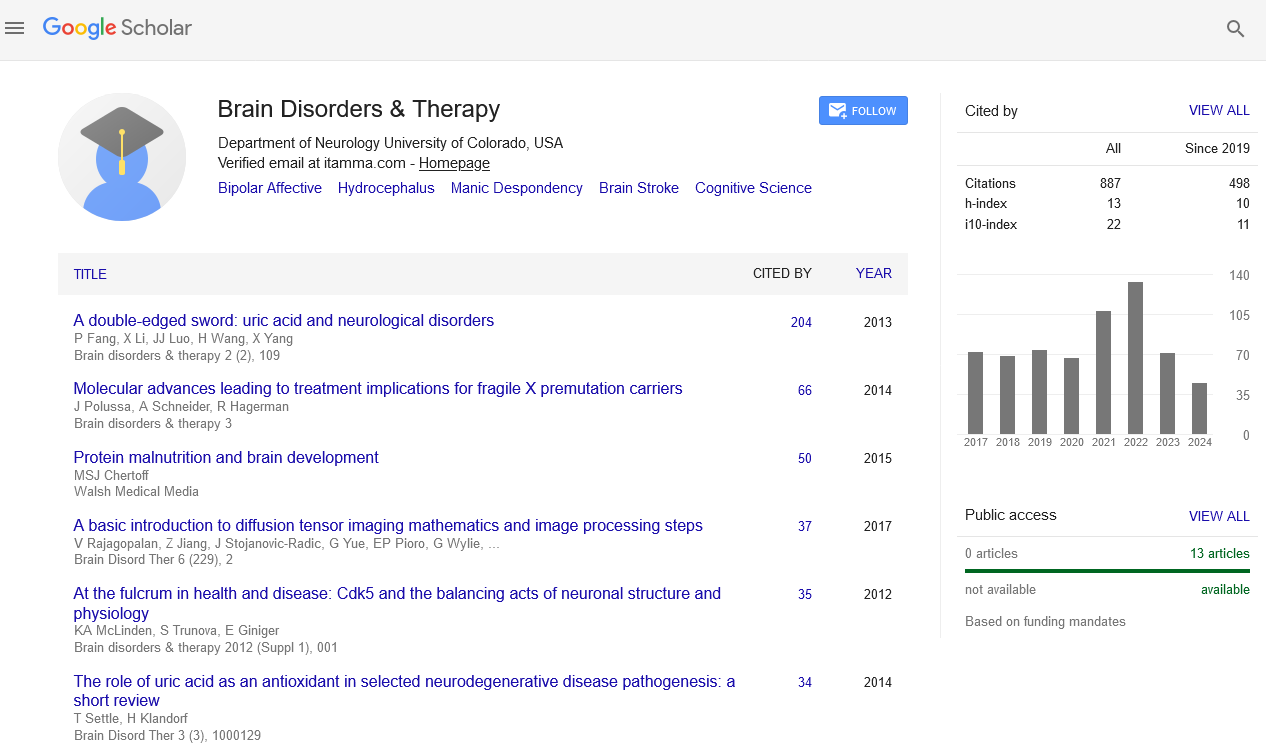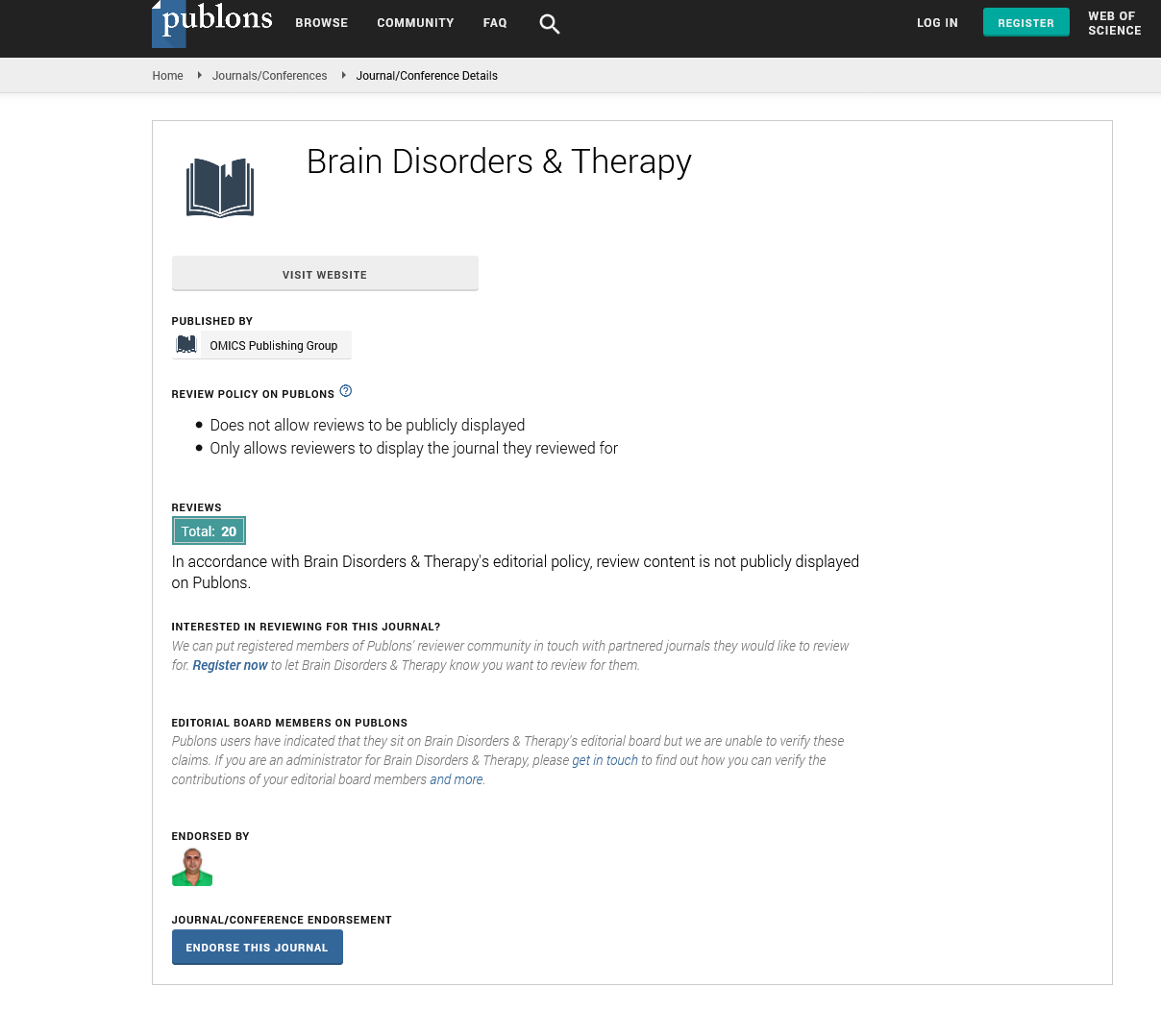Indexed In
- Open J Gate
- Genamics JournalSeek
- JournalTOCs
- RefSeek
- Hamdard University
- EBSCO A-Z
- OCLC- WorldCat
- Publons
- Geneva Foundation for Medical Education and Research
Useful Links
Share This Page
Journal Flyer

Open Access Journals
- Agri and Aquaculture
- Biochemistry
- Bioinformatics & Systems Biology
- Business & Management
- Chemistry
- Clinical Sciences
- Engineering
- Food & Nutrition
- General Science
- Genetics & Molecular Biology
- Immunology & Microbiology
- Medical Sciences
- Neuroscience & Psychology
- Nursing & Health Care
- Pharmaceutical Sciences
Mechanism of ultrasmall superparamagnetic iron oxide nanoparticles-induced glioblastoma multiforme cytotoxicity: Effects on mitochondrial function
International Conference on Neuro Oncology and Rehabilitation
July 21-22, 2016 Brisbane, Australia
Rosita Tsz-Wai Pang, George Fatseas, Mark E Koina, Sam Adamson, Steven S Eamegdool, Michael W Weible II, Nguyen Pham, Binh T T Pham, Brian S Hawkett and Tailoi Chan-Ling
University of Sydney, Australia
The Canberra Hospital, Australia
Bosch Institute University of Sydney, Australia
Posters & Accepted Abstracts: Brain Disord Ther
Abstract:
This study investigated the in vitro cytotoxic effects of Ultrasmall Superparamagnetic Iron Oxide Nanoparticles (USPIONs) uptake on GBM function. USPIONs with a mean core diameter between 10â??15 nm were loaded to CNS-1 cells cultures at different concentration (10-200 μg/mL) and its cytotoxic effects were assessed in different time-point (2-24 hr). Rat CNS-1 was chosen as our GBM model in this study because it was developed to obtain a histocompatible astrocytoma cell line with infiltrative and growth pattern similar to human gliomas. The uptake of USPIONs was analysed using the JEOL1011 transmission electron microscope (TEM) and the iron quantification was assessed using Graphite Furnace Atomic Absorption Spectrometry (GFAAS). The cell viability and the mitopotential were measured using the MUSE Count & Viability Kit and the MUSE Mitopotential Assay Kit. Bioenergetics was examined using Seahorse Mito Stress Test. TEM showed that USPIONs entered CNS-1 via clatherin coated pits which were then internalized in vacuoles. The biological effects of USPIONs on CNS-1 cell viability and mitopotential were dose and time-dependent. USPIONs at 5-200 μg/mL decreased the cell viability of CNS-1 cells at 12 hr (Control: 100%±0, USPIONs: 74.62%±2.11, P<0.05). USPIONs at 10-200 μg/mL increased the percentage of total depolarized cells at 12 hr (Control: 0.03±0.01, USPIONs: 0.37±0.12, P<0.05). Through these studies, it deepened our understanding of the cytotoxic effects of USPIONs on GBM function.
Biography :
Email: tpan2483@uni.sydney.edu.au


